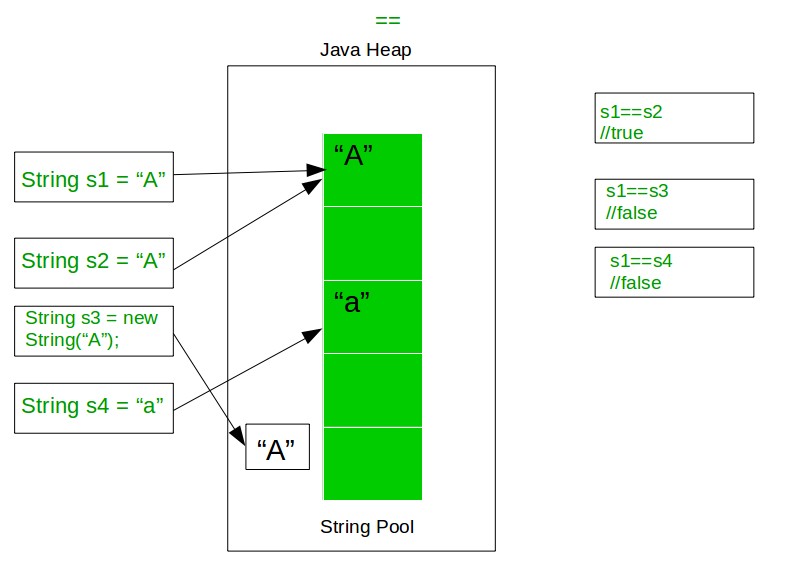Comparing data is a fundamental operation in any programming language, and Java offers several ways to compare different data types. This article explores various techniques for comparing data in Java, focusing on string comparisons and highlighting key differences between each method.
Comparing Strings in Java
Java provides a rich set of methods for comparing strings, each with its own specific use case. Here’s a breakdown of the most common methods:
1. Using the == Operator
The double equals operator (==) compares object references, not the actual content of the strings. It checks if two string variables point to the same memory location. This approach can be misleading when comparing string literals or strings created using the new keyword.
For instance:
String str1 = "hello";
String str2 = "hello";
String str3 = new String("hello");
System.out.println(str1 == str2); // Output: true
System.out.println(str1 == str3); // Output: falsestr1 and str2 refer to the same object in the string pool, resulting in true. However, str3 is a new object in a different memory location, hence false.
2. Using the equals() Method
The equals() method compares the actual content of two strings, character by character. It returns true if both strings have the same sequence of characters, regardless of their memory location.
String str1 = "hello";
String str2 = new String("hello");
System.out.println(str1.equals(str2)); // Output: trueHere, even though str1 and str2 are different objects, equals() returns true because their content is identical.
3. Using the compareTo() Method
The compareTo() method compares strings lexicographically based on the Unicode value of each character. It returns:
- 0 if the strings are equal.
- A negative value if the first string is lexicographically less than the second string.
- A positive value if the first string is lexicographically greater than the second string.
String str1 = "apple";
String str2 = "banana";
System.out.println(str1.compareTo(str2)); // Output: a negative value 4. Using the equalsIgnoreCase() Method
Similar to equals(), equalsIgnoreCase() compares the content of two strings, but it ignores case differences.
String str1 = "Hello";
String str2 = "hello";
System.out.println(str1.equalsIgnoreCase(str2)); // Output: true5. Using the compare() Method of the Collator Class
For locale-specific comparisons, use the Collator class. This allows you to compare strings based on language-specific rules.
Collator collator = Collator.getInstance();
String str1 = "äpple";
String str2 = "apple";
System.out.println(collator.compare(str1, str2)); // Output may vary depending on localeConclusion
Choosing the right string comparison method depends on the specific requirements of your application. Use == for object reference comparison, equals() for content comparison (case-sensitive), equalsIgnoreCase() for content comparison (case-insensitive), compareTo() for lexicographical comparison, and Collator.compare() for locale-sensitive comparisons. Understanding these nuances ensures accurate and efficient data comparison in your Java programs.
